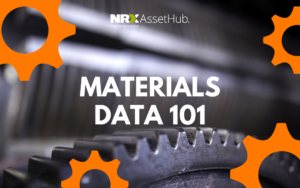Imagine taking every item in the room you’re sitting in as you read this and trying to develop a system to classify all of them. Should one category be furniture? Should another be office supplies? Should the items in these categories be arranged alphabetically? Or maybe by the frequency of their use? If this seems overwhelming, imagine trying to classify thousands and thousands of spare parts into a system that makes the most sense. We can call this classification system a taxonomy, and that name might be a little intimidating for maintenance and reliability professionals who know the great effort it takes to organize everything about their materials data. However, taxonomies are important for making spare parts easy to search up and identify. But before a good taxonomy can be implemented, developing a reliable spare parts dictionary is valuable to an asset-intensive business.
Defining the dictionary
A spare parts dictionary is a naming system which classifies the characteristics of a spare part, making it easier to find and understand in an EAM system. A dictionary enables materials to be organized by their type, class, or characteristics, and it implements standard naming conventions. Having a spare parts dictionary may seem like it should be both common sense and commonplace, but the reality is that developing an improved taxonomy through a spare parts dictionary can be a massive undertaking. Such a task doesn’t always have clear value to all the stakeholders of an asset-intensive business, but a good spare parts dictionary can solve lots of problems. Implementing a solid classification system is an opportunity to correct misnamed parts, create more useful text descriptions of these parts, and build better Bills of Materials (BoMs).
Overall, workers can save time and money when searching for spare parts, completing work orders, or ordering replacement parts with all the right characteristics.

Spare parts, classified and cleansed
A materials cleanse is an opportunity to review the existing spare parts data in your EAM system and develop an effective taxonomy that will have a considerable return of investment (ROI). A good materials cleansing solution could provide you with the materials classification library needed to optimize the use of your EAM system. This can save you from re-inventing the wheel as you try to understand and classify your spare parts data. To learn more about the benefits of a materials cleanse and what NRX Assethub can do to help, try reading one of our resources below or booking a demo.
Materials Data 101
Optimizing Spare Parts Management
Looking for a complete materials cleansing solution? Perhaps it’s time to think inside the box!
Share this article




